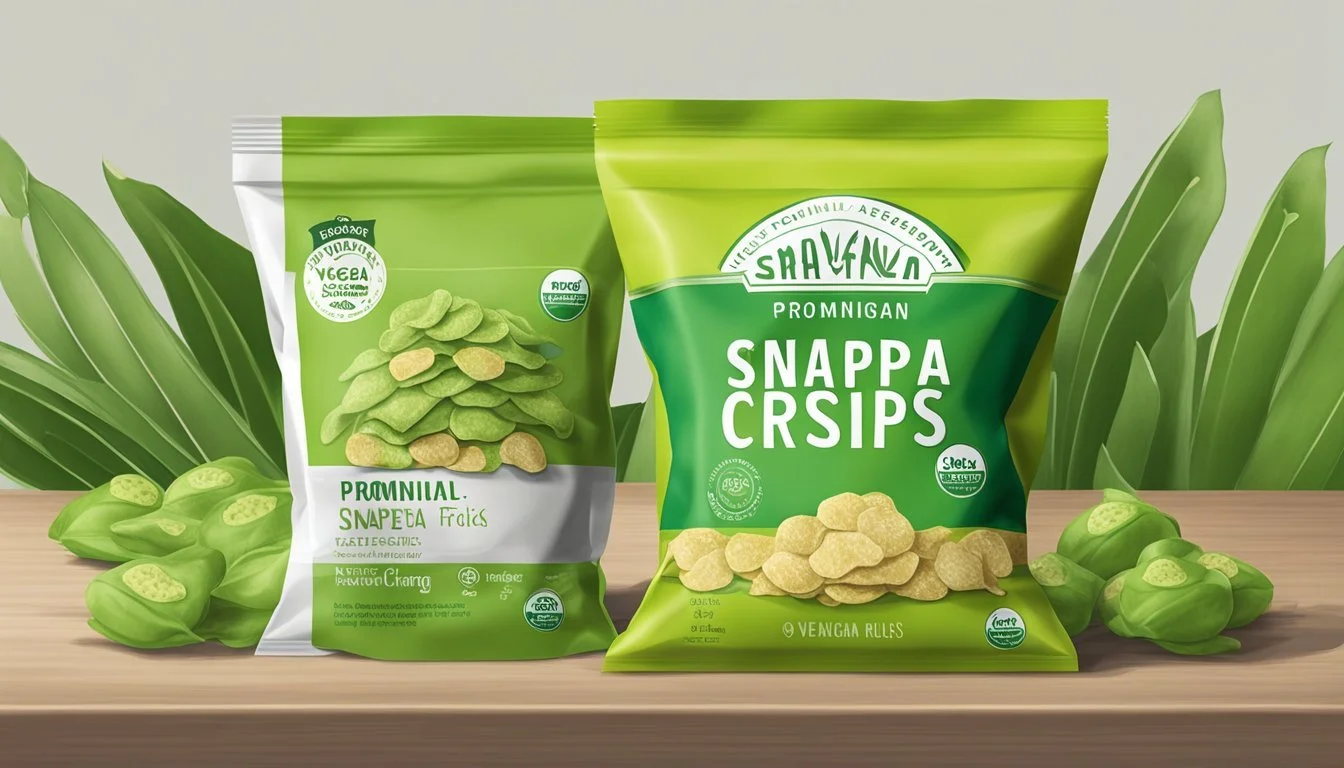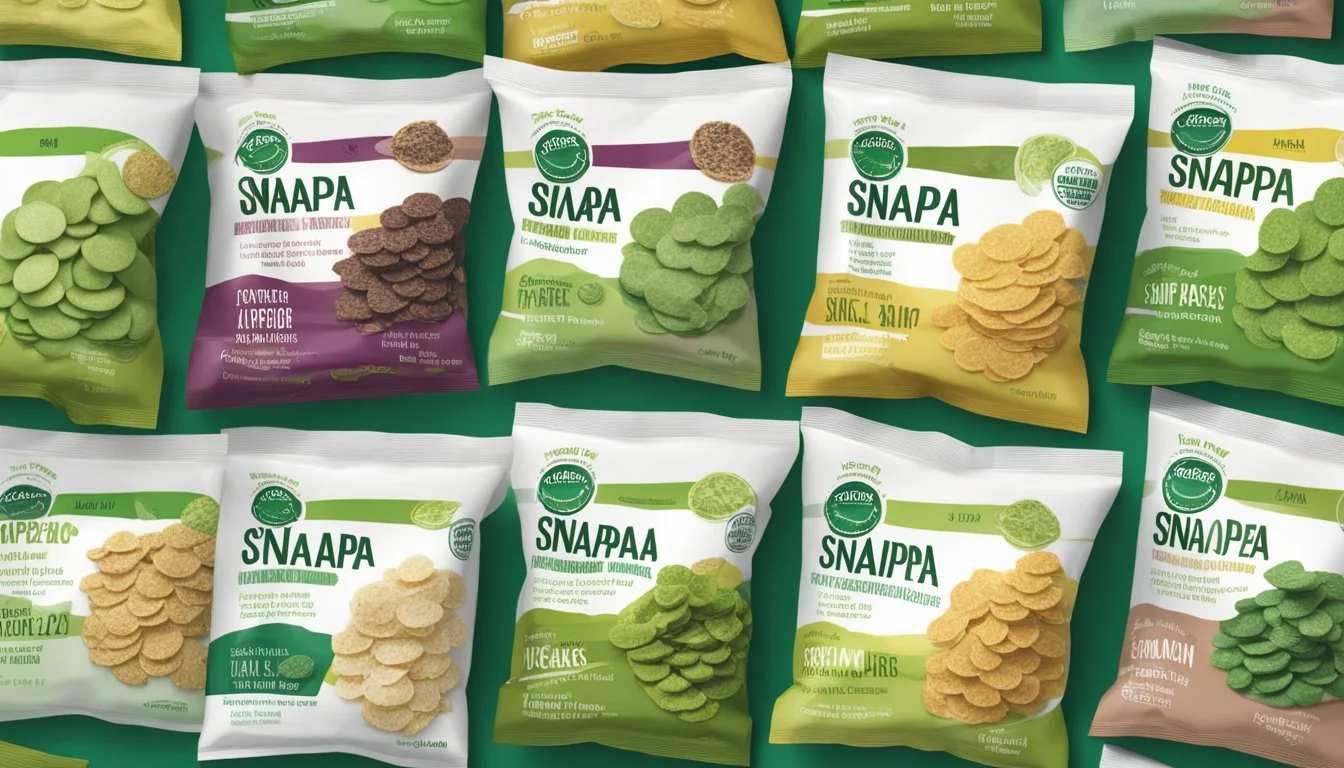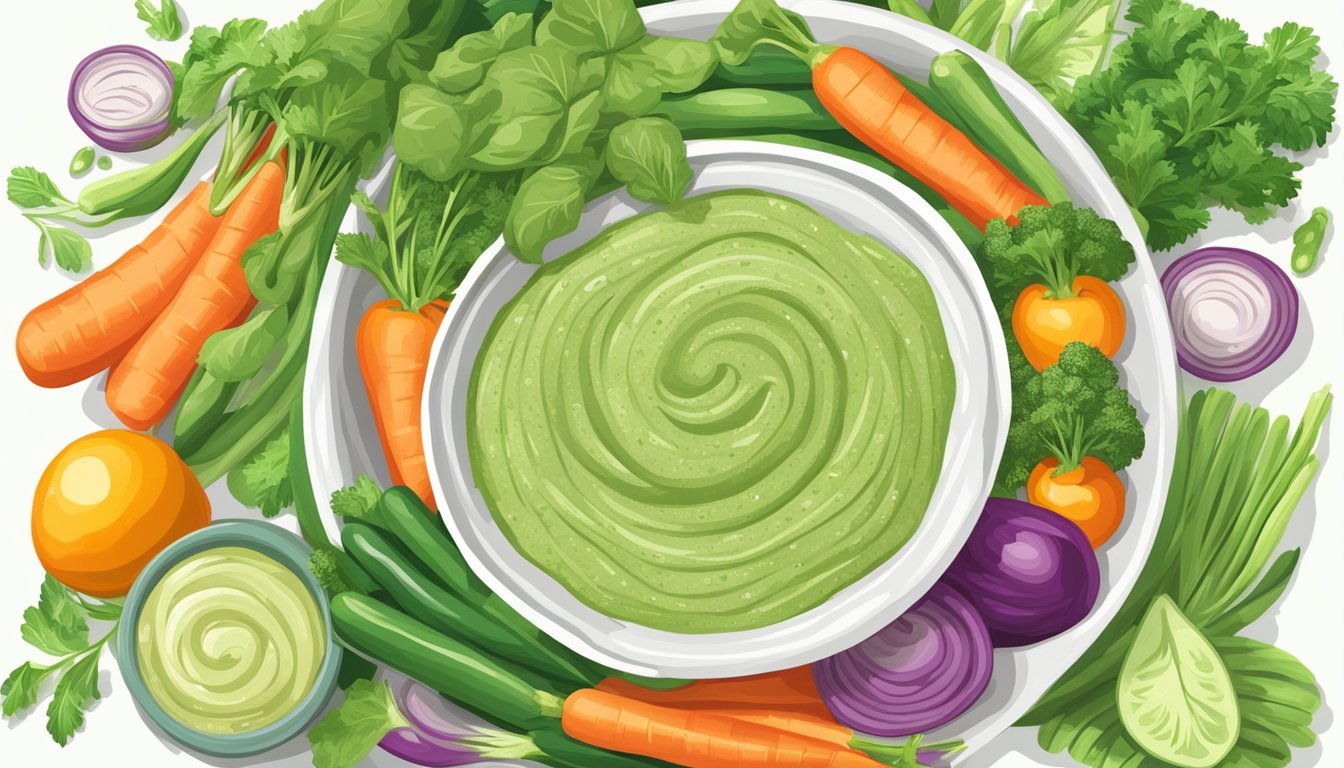Are Snapea Crisps Vegan?
Unveiling Their Dietary Status
Snapea Crisps have garnered attention among those looking for healthier snack alternatives. They are essentially a snack made primarily from green peas. Positioned as a better choice compared to traditional snacking options, Snapea Crisps provide the satisfying crunch of a chip but are baked, not fried, offering a more nutrient-rich profile. As the snack market continues to cater to diverse dietary needs, including veganism, questions about the vegan status of popular snacks like Snapea Crisps become increasingly relevant.
One of the key aspects of determining whether Snapea Crisps are vegan-friendly involves scrutinizing their ingredients. The basic ingredients, which generally include green peas, vegetable oil, rice, salt, and sometimes seasonings and preservatives, are typically plant-based. These ingredients suggest that Snapea Crisps would align with a vegan diet. However, the vegan community often looks beyond the base ingredients to consider aspects such as cross-contamination with non-vegan products or the presence of any less-obvious animal-derived additives.
For those on a vegan diet, finding a snack that doesn't compromise their lifestyle choices is of utmost importance. In the case of Snapea Crisps, it appears that the plain flavor ones could potentially fit within a vegan dietary framework. However, it is essential for consumers to check the specific product labels for any variations that might include non-vegan ingredients. Labels not only provide a list of ingredients but also shed light on manufacturing processes that could affect a product’s vegan status.
What Are Snapea Crisps?
Snapea Crisps offer a snacking experience derived from green peas, boasting a unique take on the conventional crisp. They are marketed as a healthier alternative to traditional snacks, blending taste with a veggie-based nutrition profile.
Origin and Brand
Snapea Crisps were introduced by Calbee, a Japanese snack food giant. They represent the company's innovative approach to snack foods by incorporating vegetables, such as green peas, into consumer-friendly products. Calbee aims to provide snacks that are not only tasty but also bring a touch of health consciousness to the snack aisle.
Ingredients Profile
The primary component of Snapea Crisps is the green pea, which contributes to both the flavor and nutritional value. Besides green peas, the other ingredients typically include:
Vegetable oil: for cooking and texture.
Rice: to add crispiness.
Salt: for seasoning.
Preservatives: to maintain freshness.
The formulation of Snapea Crisps results in a product that may cater to various dietary preferences, including individuals looking for gluten-free and vegan-friendly options.
Calorie and Nutritional Content
In terms of calories and nutrition, Snapea Crisps present themselves as a more nutrient-dense snack compared to traditional chips. Here's a quick breakdown of their nutritional content:
Calories: Comparable to regular chips, but with added nutritional benefits.
Protein: Significantly higher than in most chips, offering a more satisfying snack.
Fiber: Abundant fiber content, surpassing that of fresh green peas.
Nutrition Facts Amount per Serving Calories Varies Total Fat Varies Saturated Fat Varies Trans Fat Varies Cholesterol 0 mg Sodium Varies Total Carbohydrates Varies Dietary Fiber Varies Sugars Varies Protein Varies Vitamin D 0 IU Calcium Varies Iron Varies Potassium Varies
Note: The actual values can vary by flavor and brand. The above table showcases the typical range found in Snapea Crisps.
Vegan Credentials of Snapea Crisps
When evaluating the vegan status of Snapea Crisps, it is pivotal to closely examine their ingredients and potential non-vegan additives. Consumers often look for clear labeling and assurance that a snack aligns with plant-based diets before integrating it into their vegan lifestyle.
Analyzing the Ingredient List
The primary component of Snapea Crisps is whole green peas, which serves as a plant-based foundation for the snack. Other core ingredients typically include rice, oil, and salt, which, on their surface, are vegan-friendly. However, flavors and seasonings added to these crisps could contain derivatives of milk or other animal products which would make them unsuitable for individuals following a strict vegan diet. Buyers must scrutinize the packaging for any ingredient that might compromise its vegan integrity.
Potential Non-Vegan Additives
Some Snapea Crisps varieties may include additives that are of animal origin or are processed using animal-derived substances. It's important for consumers to look out for:
Flavorings: Some flavor agents can be sourced from both plant and animal ingredients.
Colorants: Certain colorants may be derived from insects, such as carmine.
Enzymes: Enzymes used in flavor development can sometimes be animal-based.
The presence of these additives would question the vegan status of the crisps. Vigilant label reading is crucial, and if there is any doubt, reaching out to the manufacturer for clarity on their product's vegan credentials can be a beneficial step for consumers.
Nutritional Benefits
Snapea Crisps present certain nutritional advantages, particularly when it comes to their protein and fiber content. These aspects confer notable benefits that can aid in meeting dietary requirements.
Protein and Fiber Content
Snapea Crisps are infused with protein and fiber, amounting to 4 grams of protein and 3 grams of fiber per serving. Protein is crucial for muscle repair and growth, while fiber aids in digestion and can help maintain a feeling of fullness between meals. The combination of these nutrients makes Snapea Crisps a more satiating snack compared to traditional potato chips.
Protein: 4 grams per serving
Fiber: 3 grams per serving
Vitamins and Minerals
While not a significant source of vitamins, Snapea Crisps do provide some essential minerals. Specifically, the addition of calcium carbonate fortifies them with calcium, which is vital for bone health. However, consumers should be aware that the product is not a primary source of vitamins, and they should look to other foods to fulfill those nutritional gaps.
Calcium: Presence due to calcium carbonate
Deficiency in vitamin content
The mentioned nutritional parameters suggest that Snapea Crisps can have a place in a balanced diet, especially when consumed as part of a varied nutritional plan that includes a broad range of vitamins and minerals from other food sources.
Potential Health Considerations
When assessing the health profile of Snapea Crisps, it is important to consider their salt and sodium content as well as the fat and caloric density. These factors can significantly influence the snack's overall nutritional value.
Salt and Sodium Levels
Snapea Crisps' appeal as a savory snack is partly due to their salt content. Elevated sodium levels can be a health concern, particularly for individuals monitoring their blood pressure. For a serving size of Snapea Crisps, one can expect:
Sodium: Varied amounts depending on the flavor, but typically comparable to or slightly lower than traditional potato chips.
It is crucial for consumers to review the nutrition label and consider how a serving of Snapea Crisps fits into their daily sodium intake limit.
Fat and Calorie Content
Considering fat and calories is essential when integrating Snapea Crisps into a balanced diet. The crisps have:
Calories: About 230 per 1.5 cups (50g) serving.
Total Fat: Approximately 9 grams per serving, including a minimal amount of saturated fat.
Carbohydrates: Around 29 grams per serving.
While Snapea Crisps provide a modest amount of protein and fiber, their fat and calorie content is similar to that of many traditional chip products. It is recommended that consumers enjoy them in moderation as part of a varied diet.
Taste and Flavor Varieties
Snapea Crisps offer a crunchy alternative to traditional snacks with a selection of flavors aimed at tantalizing the taste buds of those following a plant-based diet.
Available Flavors
Original Flavor: A savory taste primarily suited for those who prefer the natural, earthy essence of snap peas, enhanced subtly with seasonings like garlic and onion powders.
Caesar: This variety includes additional flavorings reminiscent of Caesar salad, though it may contain ingredients not suitable for a strict vegan diet.
Comparing Texture and Taste
The texture of Snapea Crisps diverges from both fresh snap peas and traditional fried snacks. They possess a lighter crunch, making them less crunchy than their fresh counterparts. Flavors such as Caesar may introduce hints of garlic powder, onion powder, and black pepper, diverging from the more delicate taste of the Original flavor, which aims to stay closer to the snap pea’s intrinsic flavor profile.
Consumption and Serving Ideas
Snapea Crisps offer versatility as a snack, allowing consumers to enjoy them straight out of the bag or get creative with how they serve them. Below are structured recommendations for snacking and some inspiration for incorporating Snapea Crisps into various eating occasions.
Snacking and Portion Recommendations
When indulging in Snapea Crisps as a healthy snack, it's essential to be mindful of portions. One should adhere to the serving sizes recommended on the packaging to maintain balance in their diet. Typically, a single serving is around 22 pieces (28 grams), which usually contains about 110-120 calories, depending on the brand.
Table: Suggested Serving Size for Snapea Crisps
Portion Calories Protein Fiber 1 serving ~110-120 4-5g 2-4g
Consumers might find Snapea Crisps a satisfying snack due to their higher protein and fiber content compared to regular potato chips, which can contribute to a feeling of fullness.
Creative Ways to Enjoy
One can easily elevate the snacking experience with Snapea Crisps by incorporating them into recipes or using them as an accompaniment. These are some specific ideas:
As a crunchy topping: Crumble them over salads or soups to add a savory crunch.
In a trail mix: Mix with nuts, seeds, and dried fruit for a textured snacking adventure.
With a dip: Pair with hummus or a vegan yogurt dip for added flavor and nutrition.
Oven-baked treats: Combine crushed Snapea Crisps with breadcrumbs to create a crispy coating for baked vegetables or tofu.
Alternative to veggie straws: Use them as a more protein and fiber-rich substitute for veggie straws in any snack platter.
Creative use of Snapea Crisps not only diversifies one's palate but can also contribute to a more balanced diet when paired with other healthful foods.
Comparative Analysis with Other Snacks
In assessing the merits of Snapea Crisps as a vegan snack, they will be compared to traditional chips and healthier snack alternatives to evaluate their place within the snack spectrum.
Snapea Crisps vs. Chips
Nutritional content: Snapea Crisps offer a different nutritional profile compared to standard potato chips. A standard serving of Snapea Crisps contains approximately 110 calories, 4 grams of protein, and 3 grams of fiber. In contrast, a typical serving of potato chips often contains similar calorie counts but generally offers less protein and fiber. Additionally, Snapea Crisps maintain lower levels of sodium and no cholesterol, enhancing their suitability as a vegetarian and vegan-friendly snack.
Ingredients: The base of Snapea Crisps is made from peas, which not only contributes to the higher protein content but also aligns with vegetarian and vegan dietary choices. Potato chips, on the other hand, are commonly made from sliced potatoes and may sometimes be cooked in animal fats, which can make them unsuitable for vegans.
Healthier Snack Alternatives
Comparison to other healthy snacks: When evaluating Snapea Crisps against other packaged snacks proclaimed as healthy, they stand out in terms of protein contribution. For instance, the protein content in a serving of peanut butter is about 4 grams per tablespoon, while Snapea Crisps contain 5 grams per serving, making them a more protein-rich snack option.
Fat and sodium levels: Despite healthier branding, some so-called healthy crisps can contain more saturated fats and salt compared to traditional potato chips. It's important to examine the nutrition labels carefully; however, Snapea Crisps manage to provide a balance with only 6 grams of fat and 75 mg of sodium per serving, which can be considered moderate compared to other snacks in the healthy category.







